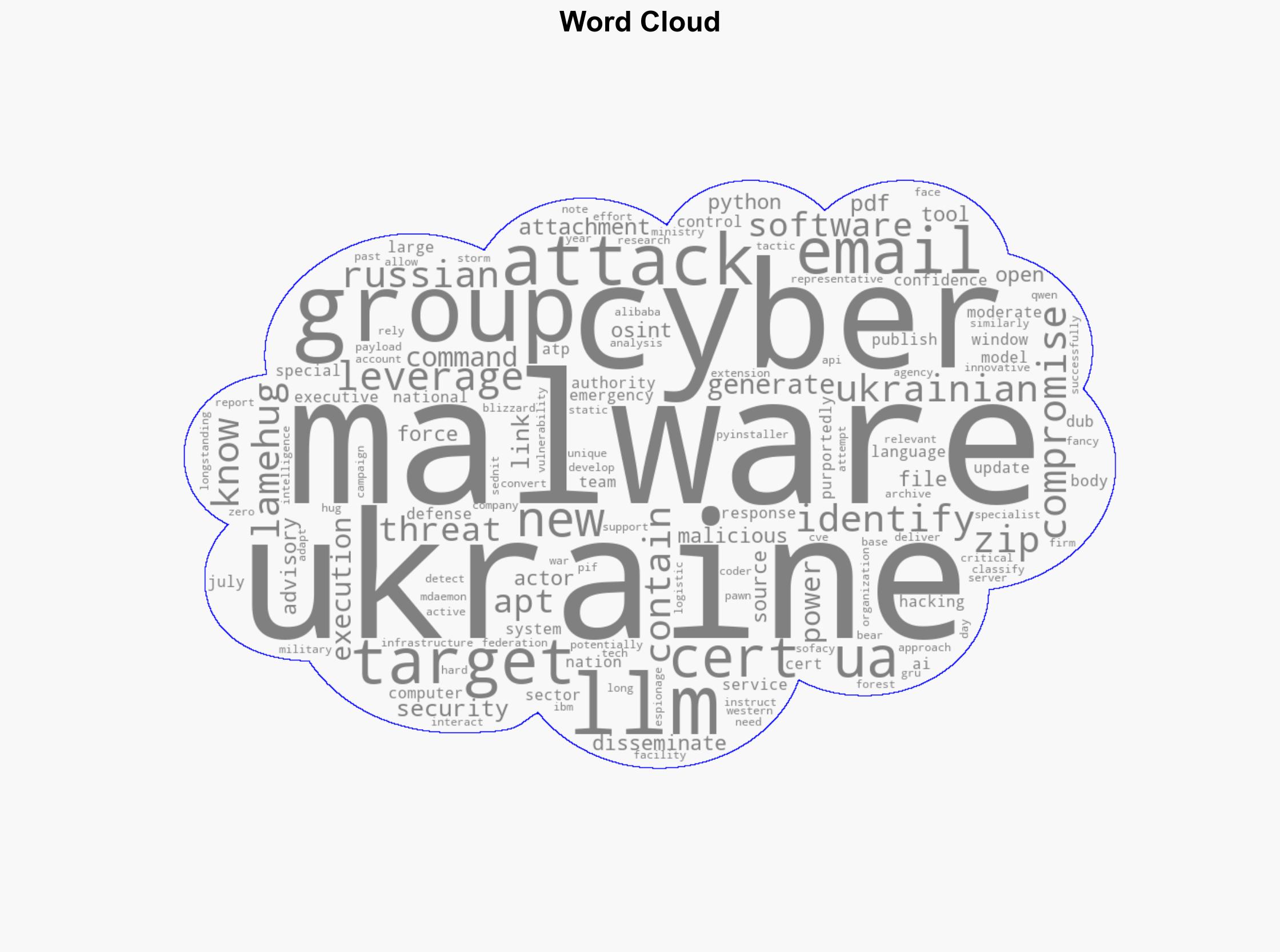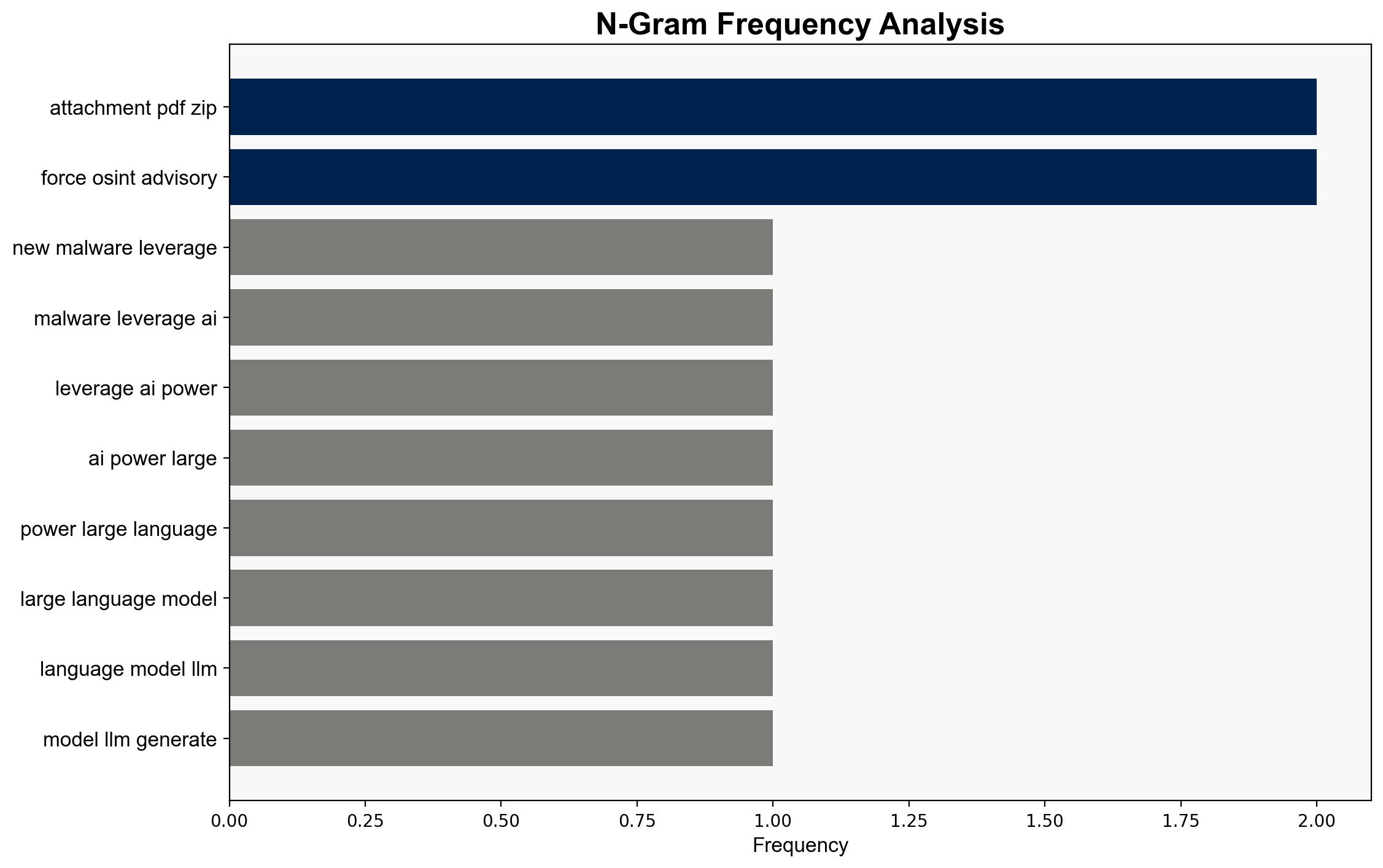New LameHug Malware Deploys AI-Generated Commands – Infosecurity Magazine
Published on: 2025-07-18
Intelligence Report: New LameHug Malware Deploys AI-Generated Commands – Infosecurity Magazine
1. BLUF (Bottom Line Up Front)
The LameHug malware represents a significant advancement in cyber threats, utilizing AI-generated commands to enhance its adaptability and stealth. This malware targets critical sectors in Ukraine, with potential links to Russian state-sponsored groups. Immediate actions are recommended to bolster cybersecurity defenses, particularly in sectors related to national security and defense.
2. Detailed Analysis
The following structured analytic techniques have been applied to ensure methodological consistency:
Adversarial Threat Simulation
Simulations indicate that LameHug’s use of AI-generated commands allows it to dynamically adapt to different environments, increasing the difficulty of detection and mitigation.
Indicators Development
Key indicators include unusual command execution patterns and the presence of Python-based files with .pif extensions. Monitoring these can aid in early detection.
Bayesian Scenario Modeling
Probabilistic models suggest a high likelihood of further attacks targeting Ukrainian infrastructure, with potential spillover effects into allied nations’ systems.
3. Implications and Strategic Risks
The deployment of LameHug malware poses a significant threat to national security, particularly in the defense sector. The innovative use of AI-generated commands could set a precedent for future cyber threats, increasing the complexity of cybersecurity measures required. Cross-domain risks include potential disruptions to critical infrastructure and economic stability in the region.
4. Recommendations and Outlook
- Enhance monitoring systems to detect AI-generated command patterns and anomalies.
- Implement advanced threat intelligence sharing across sectors to improve collective defense mechanisms.
- Scenario-based projections:
- Best case: Rapid detection and neutralization of the malware with minimal disruption.
- Worst case: Widespread infrastructure compromise leading to significant economic and security impacts.
- Most likely: Continued targeted attacks with moderate disruptions, requiring ongoing vigilance and adaptation.
5. Key Individuals and Entities
The report identifies the involvement of the APT group known as Fancy Bear, linked to Russian military intelligence. No specific individuals are named in the source material.
6. Thematic Tags
national security threats, cybersecurity, counter-terrorism, regional focus





